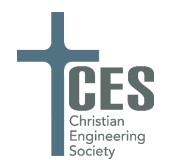Document Type
Paper
Abstract
To a Christian engineer both faith and engineering practice are very important. As we work through what we believe about God and how we practice engineering, we find that they have something important in common. Both systematic theology and engineering practice are approximations in our attempts to understand reality.
When theologians attempt to systematize the faith, they are coming up with human models of how they see God acting in human history. When engineers design a new product, they use models of how materials act when they have various forces applied to them.
For example, in discussing end times theologians have created models such as pre-millennial, post-millennial and a-millennial. Similarly, as an engineer I accept the model of Newtonian mechanics to describe the behavior of solid materials under stress. However, this is just a model (though a good one) of how things behave.
While these models are human abstractions concerning ultimate reality, they need to be precise enough upon which to base fundamental choices in life. If we are to experience the life God wants us to have we need to understand theology well enough to know what God expects of humans. While Newtonian mechanics is not a perfect model it is good enough for us to use as the basis for the design of a new airplane. In both situations, human life is at stake. Good theology can make life more pleasant and help us understand God better; good engineering can make human life more comfortable and help us understand science better.
With respect to innovations, both disciplines recognize their need, but also their limitations. Whatever we develop must match the reality that we already know. A good theologian needs to be able to help Christians who face new issues, such as privacy and the use of technology. However, too much innovation in theology can lead to models about God that are not consistent with the Bible nor the experiences of Christians throughout history. Engineers are rewarded for creating new designs; however, whatever they create must still work in the real world. Their designs have to be grounded in the real physical world that exists.
Systematic theology and engineering practice are approximations of reality, not ultimate reality itself. However, they can become good enough approximations so that you can reliably use them to guide your life. This paper describes several ways that such approximations can be used by the Christian engineer.
Creative Commons License

This work is licensed under a Creative Commons Attribution-Noncommercial-No Derivative Works 4.0 License.
Copyright
© 2017 William M. Jordan. All rights reserved.
Publication Date
June 2017
Theology and Engineering Practice: Models of Reality
To a Christian engineer both faith and engineering practice are very important. As we work through what we believe about God and how we practice engineering, we find that they have something important in common. Both systematic theology and engineering practice are approximations in our attempts to understand reality.
When theologians attempt to systematize the faith, they are coming up with human models of how they see God acting in human history. When engineers design a new product, they use models of how materials act when they have various forces applied to them.
For example, in discussing end times theologians have created models such as pre-millennial, post-millennial and a-millennial. Similarly, as an engineer I accept the model of Newtonian mechanics to describe the behavior of solid materials under stress. However, this is just a model (though a good one) of how things behave.
While these models are human abstractions concerning ultimate reality, they need to be precise enough upon which to base fundamental choices in life. If we are to experience the life God wants us to have we need to understand theology well enough to know what God expects of humans. While Newtonian mechanics is not a perfect model it is good enough for us to use as the basis for the design of a new airplane. In both situations, human life is at stake. Good theology can make life more pleasant and help us understand God better; good engineering can make human life more comfortable and help us understand science better.
With respect to innovations, both disciplines recognize their need, but also their limitations. Whatever we develop must match the reality that we already know. A good theologian needs to be able to help Christians who face new issues, such as privacy and the use of technology. However, too much innovation in theology can lead to models about God that are not consistent with the Bible nor the experiences of Christians throughout history. Engineers are rewarded for creating new designs; however, whatever they create must still work in the real world. Their designs have to be grounded in the real physical world that exists.
Systematic theology and engineering practice are approximations of reality, not ultimate reality itself. However, they can become good enough approximations so that you can reliably use them to guide your life. This paper describes several ways that such approximations can be used by the Christian engineer.

